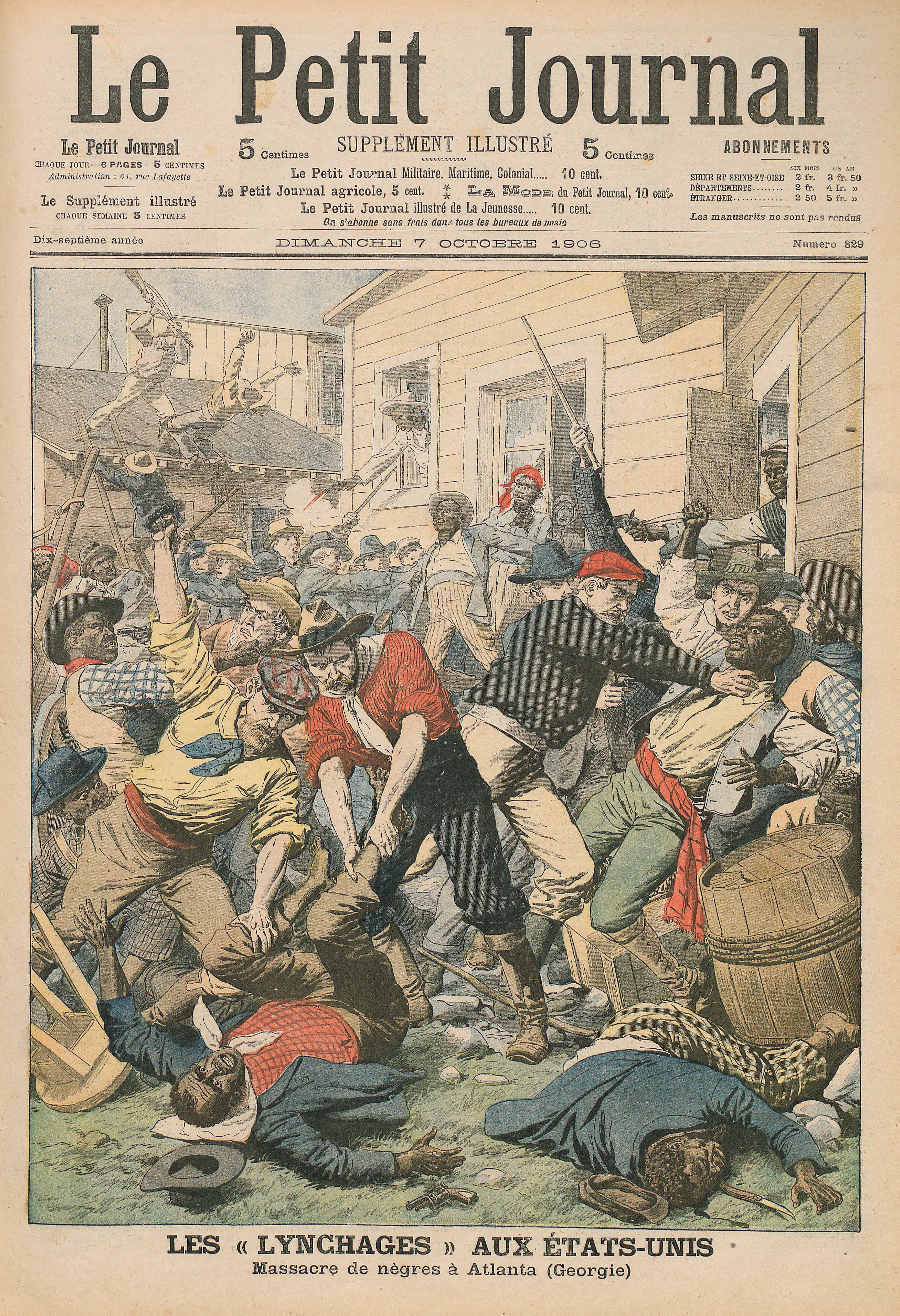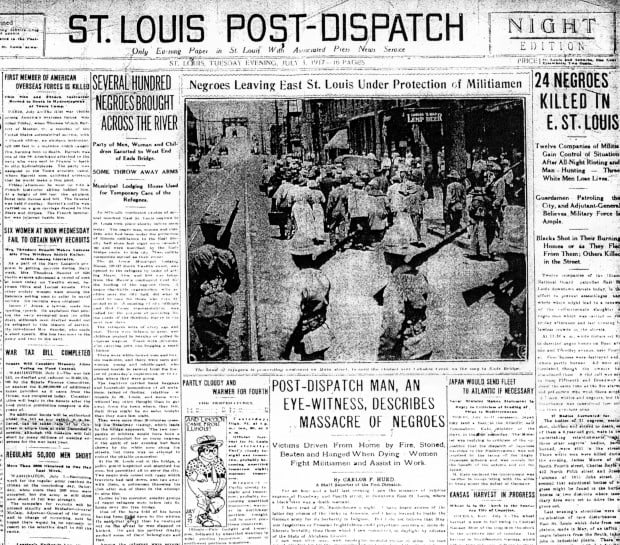In 1860, before the Civil War, Wilmington was majority black and the largest city in the state, with nearly 10,000 people.
[5] Numerous slaves and free blacks worked at the port, in households as domestic servants, and in a variety of jobs as artisans and skilled workers.
[5]
After the
Battle of Fort Fisher, which the Union won in January 1865, Wilmington was taken by Union troops in February, after they had worked their way through Confederate defenses up the
Cape Fear River. Numerous slaves had escaped to Union lines before this, seeking freedom, and some fought with the Union. With its victory in the
Battle of Wilmington, the Union completed its blockade of major southern ports. The Confederate General
Braxton Bragg had burned tobacco and cotton stores before leaving the city.
With the end of the war,
freedmen in many states left plantation and rural areas for towns and cities, not only to seek work but to gain safety by creating black communities without white supervision. Tensions grew in Wilmington and other areas because of a shortage of supplies; Confederate currency had no value and the South was impoverished at the end of the long war.
Federal constitutional amendments had abolished slavery, and granted citizenship and voting rights to
freedmen. Adults and children were pursuing education. Freedmen were eager to vote, tending to support the
Republican Party that had achieved their freedom.
In North Carolina, state and local races were close, with Republicans winning most of the offices. Their ascendancy to power can be traced to granting the franchise to freedmen, plus the successful formation of a biracial coalition of
freedmen, recent black and white migrants from the North, and white Southerners who supported the Union and Reconstruction. Many white Democrats had been embittered since the Confederacy's defeat, and most veterans were armed. Insurgent veterans joined the
Ku Klux Klan (KKK), which started in
Tennessee but soon had chapters across the South. It generated considerable violence at elections to suppress the black vote, and Democrats regained control of the state legislature in 1870. After the KKK was suppressed by the federal government through the
Force Act of 1870, new
paramilitary groups arose in the South. By 1874, chapters of
Red Shirts, a paramilitary arm of the Democratic Party, had formed in North Carolina, helping Wade Hampton gain election in 1874 by suppressing the black vote. A Republican governor was elected in 1876, before the end of Reconstruction and withdrawal of federal troops from the South.
In the years that followed, Wilmington, then the largest city in the state, had a majority-black population, which included numerous black professionals and a rising middle class. The Republican Party was
biracial in membership. Unlike in many other jurisdictions, blacks in Wilmington gained positions as members of the police force and fire department, as well as elected positions.
Election of 1898
In 1871 Democrats regained control of the state legislature.
After 1875, the white Democratic campaign to reduce voting by freedmen was helped by the
Red Shirts, a
paramilitary group that openly disrupted Republican and especially black meetings, and intimidated voters to keep them from the polls. The group had started in Mississippi in 1875, and chapters arose in both the Carolinas. In the same period, some 20,000 white men in North Carolina belonged to rifle clubs, who comprised other paramilitary groups. Although Democrats dominated state politics after 1877, both blacks and whites continued to participate in politics and, in the 1890s, the
Populists appealed to many former Democratic voters. The last black US Congressman of the 19th century from North Carolina was elected in 1896; another African-American congressman was not elected from the state until the late 20th century, due to disfranchisement of blacks in 1899.
In the 1894 and 1896 elections, North Carolina's Populist Party supported fusion candidates in an alliance with the Republican Party; they won enough votes to gain control of the state government; they were known as the Fusionists. Governor
Daniel L. Russell, a Republican was elected in 1896. The Fusionists won the elections and passed a law increasing the franchise for blacks and whites, who were the majority in the state, by decreasing property requirements for voters. Russell was the first Republican elected since 1877.
During the 1898 election, the Democratic Party regained control at the state level, in part due to widespread violence and intimidation of blacks by the Red Shirts, which suppressed black voting. They ran a campaign of regaining
white supremacy. Russell was unable to satisfy both the Populist and Republican parties to keep the Fusion coalition viable.
[6]
Because Wilmington was a black-majority city, its election of city officers was followed statewide. Groups of four to eight white men had been patrolling every block in the city for weeks before the election.
[7] On November 4, 1898, the
Raleigh News & Observer noted that,
The first Red Shirt parade on horseback ever witnessed in
Wilmington electrified the people today. It created enthusiasm among the whites and consternation among the Negroes. The whole town turned out to see it. It was an enthusiastic body of men. Otherwise it was quiet and orderly.
Despite the Democrats' inflammatory rhetoric in support of
white supremacy, and the Red Shirt armed display, voters elected a biracial fusionist government to office in Wilmington on November 8; the mayor and 2/3 of the aldermen were white.
Democratic Party white supremacists, led by
Alfred Moore Waddell, who as incumbent had lost his congressional seat to
Daniel L. Russell (now governor) in 1878, had organized a secret committee of nine. This committee had planned to replace the government if the Democratic Party candidates lost. During the election campaign, whites had criticized
Alexander Manly, owner and editor of Wilmington's
Daily Record, the state's only black-owned newspaper, and wanted to close him down.
For some time,
Josephus Daniels, editor of the Raleigh
News and Observer, had used Wilmington as a symbol for "Negro domination" because of its government, although it was biracial and dominated by a two-thirds white majority. Many newspapers published pictures and stories implying that African-American men were sexually attacking white women in the city. Manly denied such charges, saying the stories represented consensual relationships and suggested "white men [should] be more protective of their women against sexual advances from males of all races."
[8] White supremacists publicized his words as a catalyst for violence against the black community.
[8]
After the election, whites created a Committee of Twenty-Five, all supremacists, and presented their demands to the Committee of Colored Citizens (CCC), a group of politicians and leaders of the African-American community. Specifically, the whites wanted the CCC to promise to evict Manly and his brother Frank, a co-owner of the paper, from the city. They gave the CCC a deadline of November 10, 1898 to respond. When Waddell and the Committee had not received a response by 7:30 a.m., he gathered a large group of white businessmen and veterans at the Wilmington Light Infantry (WLI) armory.
[4] By 8:00 a.m., Waddell led the armed group of 1,000-1500 men, organized in military formation, to the
Daily Record office, where they destroyed the equipment and burned down the building of the only African-American newspaper in the state. By this time, the crowd had swelled to nearly 2,000 men.
[7]



























